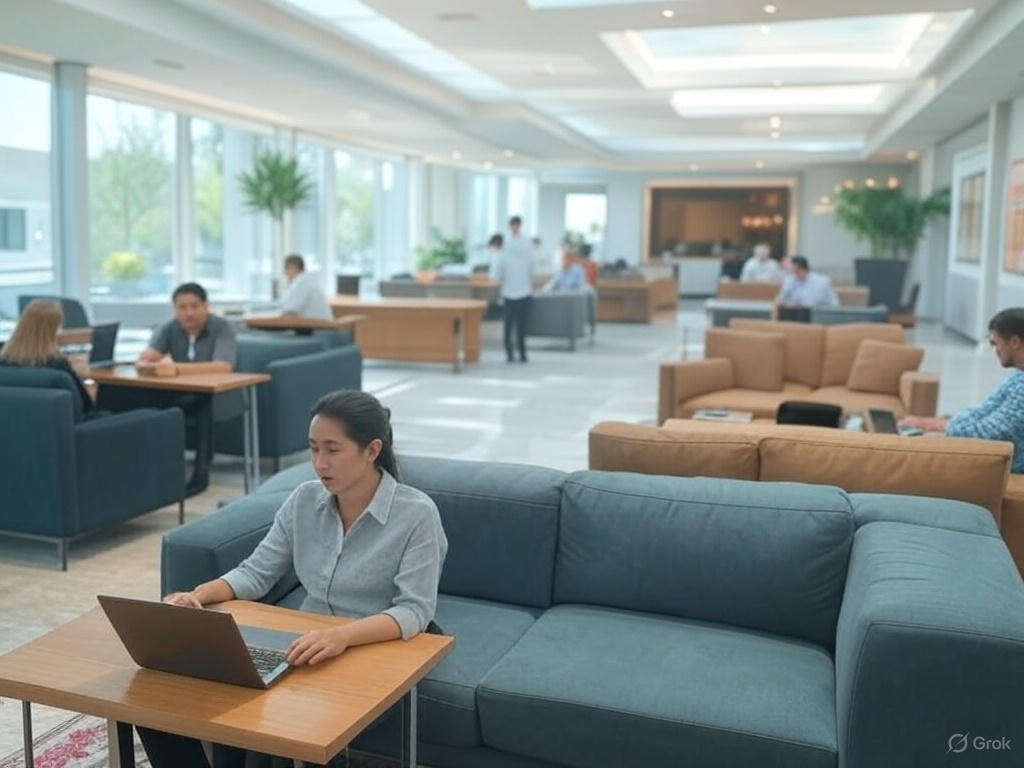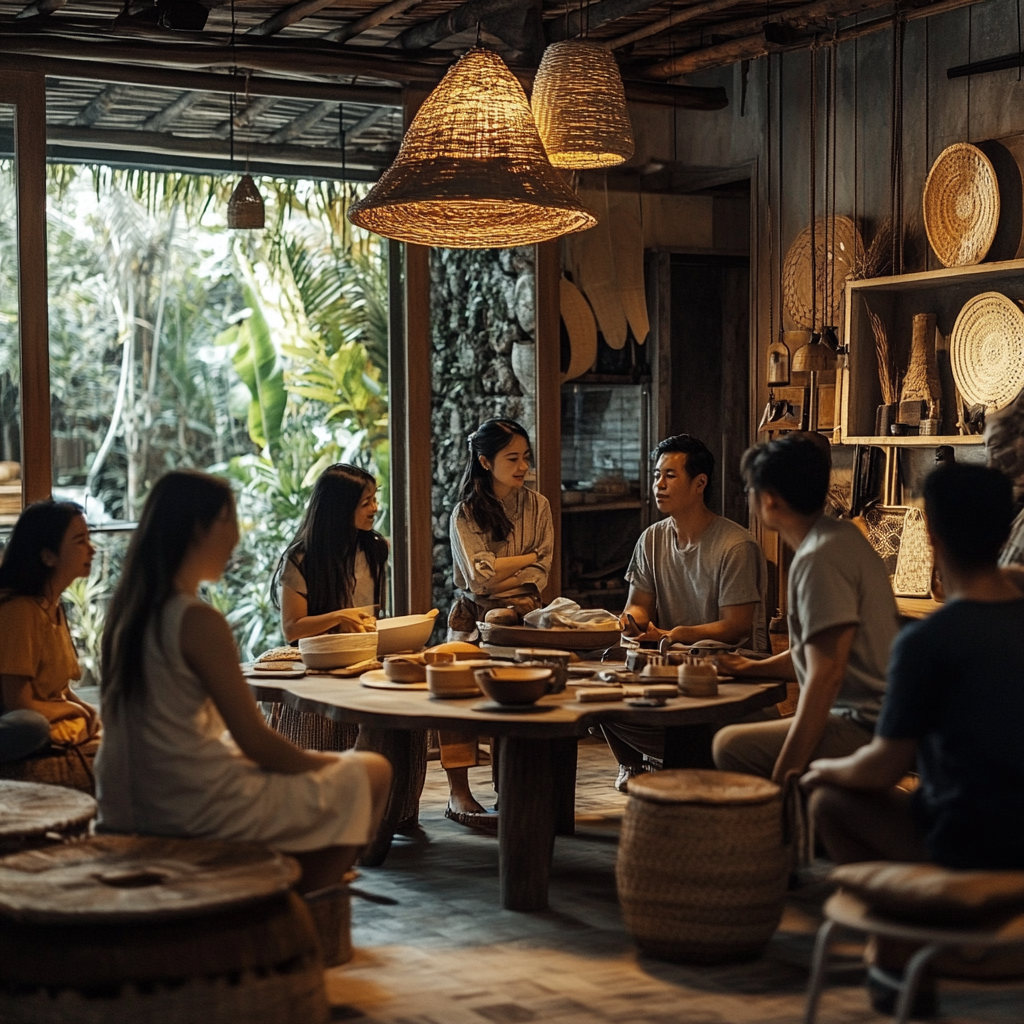In the constant quest for revenue growth, many hoteliers overlook their most accessible market: the local community. While traditional hotel strategy focuses on attracting travelers from afar, forward-thinking properties are discovering substantial untapped revenue potential just outside their doors.
The Local Community Opportunity
The neighbors, professionals, and residents within a 5-mile radius of your property represent a significant, year-round revenue source with distinct advantages:
- Consistent demand regardless of tourism seasonality or economic fluctuations
- Lower acquisition costs compared to targeting distant travelers
- Recurring revenue potential through membership and subscription models
- Word-of-mouth marketing amplifying your property's local reputation
- Resilience during travel disruptions when traditional bookings decline
Unlock Year-Round Revenue from Your Local Community
Neighbors, professionals, and residents within 5 miles offer a stable, cost-effective alternative to traditional travelers.
Traditional Travelers
Stability: High seasonality—peaks in summer and holidays, dips in off-seasons or disruptions.
Acquisition Costs: Expensive marketing to distant audiences via ads, OTAs, and promotions.

Local Community
Stability: Consistent demand year-round, unaffected by tourism trends or travel bans.
Acquisition Costs: Lower spend with targeted local outreach and organic word-of-mouth.

Why Local Wins
- Consistent demand regardless of seasonality or economic shifts.
- Lower acquisition costs compared to distant travelers.
- Recurring revenue through memberships and subscriptions.
- Word-of-mouth marketing boosts local reputation.
- Resilience during travel disruptions.
High-Impact Local Revenue Streams
Workspace Revolution
- Daily co-working packages offering lobby or dedicated spaces for local remote workers
- Meeting room rentals by the hour for small businesses without dedicated offices
- "Zoom rooms" providing professional backgrounds for important virtual meetings
- Monthly workspace memberships with bundled amenities and F&B credits
- Corporate retreat packages for local businesses seeking off-site collaboration spaces
Wellness & Recreation Access
- Fitness center memberships during traditionally low-occupancy morning hours
- Pool access passes for local residents during weekday periods
- Spa treatment packages specifically priced and marketed to the local market
- Wellness classes taught in underutilized spaces like ballrooms or rooftops
- Recovery day packages combining pool, spa, and F&B elements for locals
Food & Beverage Innovations
- Commuter coffee programs with loyalty incentives for neighborhood regulars
- "Working lunch" promotions targeting nearby office employees
- Weekend brunch clubs with member benefits for regular local patrons
- Take-home dinner options leveraging kitchen capacity during slower periods
- Specialized local happy hours creating a neighborhood gathering place identity
Occasion & Event Spaces
- Micro-wedding venues for local couples seeking intimate celebration spaces
- Birthday party packages utilizing function rooms during off-peak periods
- Community meeting spaces for neighborhood associations and local groups
- Seasonal celebration venues for families seeking holiday gathering locations
- Life celebration packages for milestone events (graduations, retirements, etc.)
Technology-Driven Local Customer Discovery
The key to unlocking local revenue lies in effectively discovering and engaging your neighborhood audience through strategic use of technology:
Geotargeted Digital Outreach
- Implement geofenced advertising that displays only to mobile users within 3-5 miles of your property
- Deploy location-based push notifications when locals approach your hotel
- Use Google Business Profile posts with local-specific offers and "near me" search optimization
- Create ZIP code targeted email campaigns with messaging tailored to specific neighborhoods
Hyperlocal Social Media Strategy
- Leverage neighborhood hashtags and location tags to appear in local feeds
- Join and actively participate in Facebook neighborhood groups and NextDoor communities
- Create content addressing local pain points (e.g., "Need a quiet workspace near Central District? Our lobby is open!")
- Implement social listening tools to identify local conversations about space and service needs
Digital Discovery in Action
The Harborview Hotel identified 3,200 professionals working from home within a 2-mile radius by using advanced digital listening tools and hyperlocal social media monitoring. Within 45 days of launching targeted ads to this segment, their lobby co-working space reached 85% capacity during weekday hours, generating $22,000 in monthly revenue from previously unused space.
Digital Space Marketplace Presence
- List available spaces on platforms like Peerspace, Breather, and SpaceTogether
- Create dedicated local booking portals on your website with neighborhood-specific messaging
- Develop partnerships with corporate booking platforms used by local businesses
- Implement QR codes around the property linking to instant space booking options
Mobile-First Local Engagement
- Create a dedicated section in your hotel app specifically for local offers
- Implement mobile check-in for day guests accessing specific amenities
- Develop digital loyalty programs with progressive rewards for frequent local usage
- Enable proximity-based promotions that activate when locals enter your neighborhood
Smart CRM for Local Relationship Building
- Segment your database to identify local vs. traveler profiles
- Track local customer preferences and usage patterns
- Implement automated follow-up sequences after first-time local customer visits
- Develop predictive models to identify high-value local customer prospects
Implementation Strategies for Local Market Penetration
1. Community Needs Assessment
Before launching any initiatives, understand what your local area truly needs:
- Survey neighborhood businesses about workspace and meeting requirements
- Analyze local demographic data to identify lifestyle patterns and preferences
- Evaluate existing community options to identify underserved segments
- Host focus groups with local residents to gather direct feedback
2. Pricing & Packaging for Local Appeal
Local customers have different decision drivers than travelers:
- Create membership models encouraging recurring commitment
- Develop tiered access packages at multiple price points
- Offer weekday/weekend differential pricing reflecting usage patterns
- Bundle complementary services to increase transaction value
- Implement loyalty programs specifically for local patrons
3. Digital-First Local Marketing Strategy
- Create neighborhood-specific landing pages addressing local needs
- Implement automated booking tools for hourly space reservations
- Develop virtual tours and 360° views of available spaces
- Use targeted social media campaigns focused on specific local demographics
- Partner with local digital influencers and neighborhood bloggers
4. Technology-Enabled Operations
- Implement access control systems (digital keys, QR codes) for hourly space usage
- Deploy space utilization analytics to optimize availability and pricing
- Create self-service booking kiosks in the lobby for spontaneous local usage
- Develop automated upsell systems for local customers based on usage patterns
- Implement real-time availability displays for flexible spaces
Case Study: The Neighborhood Hotel
When The Parkside Hotel experienced a 40% decline in traditional bookings during a seasonal slump, they implemented a technology-driven "Local First" strategy:
- Developed a geofenced digital campaign targeting professionals within 3 miles
- Created a self-service booking portal for their underutilized meeting spaces
- Implemented a digital membership program with mobile check-in for amenity access
- Leveraged their CRM to identify and target local opportunity segments
Results over 12 months:
- $315,000 in new revenue from local workspace memberships
- 30% increase in F&B revenue from non-overnight customers
- 75% of local bookings occurring through self-service digital channels
- 65% reduction in customer acquisition costs compared to tourist marketing
- Created a database of 3,400 local customers for ongoing marketing
Technology ROI Snapshot
The Parkside Hotel's investment in digital customer acquisition technology delivered impressive returns:
- Implementation cost: $28,500 for geofencing, booking portal, and mobile access
- Monthly technology maintenance: $1,200
- First-year revenue from local channels: $315,000
- ROI: 982% in first year
- Customer acquisition cost: $8.40 per local customer (vs. $54 for non-local guests)
Measuring Local Revenue Success
Track these key metrics to evaluate your local market initiatives:
- Digital engagement rates from neighborhood-targeted campaigns
- Conversion percentages on local-specific landing pages
- Customer acquisition costs segmented by local vs. traditional guests
- Usage frequency and retention rates for local customers
- Digital review scores specifically from local service users
The Path Forward: Becoming a Digitally-Connected Community Asset
The transformation from "a place for travelers" to "an essential local resource" requires both strategic thinking and technological implementation. By leveraging digital tools to discover, engage, and serve your neighborhood community, you create resilient revenue streams while building a protective moat of local loyalty.
The hotels that thrive in coming years will be those that effectively harness technology to identify local needs, facilitate frictionless space utilization, and create seamless digital-to-physical experiences for the customers already in their backyard.
Take Action Now:
- Implement geofenced digital advertising targeting a 3-mile radius around your property
- Create a dedicated "Local Offers" section on your website with neighborhood-specific messaging
- Deploy QR codes around your property linking to space booking options
- Test an automated email campaign specifically targeting local ZIP codes with workspace offerings
This article is part of our ongoing exploration of evolving hospitality trends and strategies for creating exceptional guest experiences and hotel profitability.




